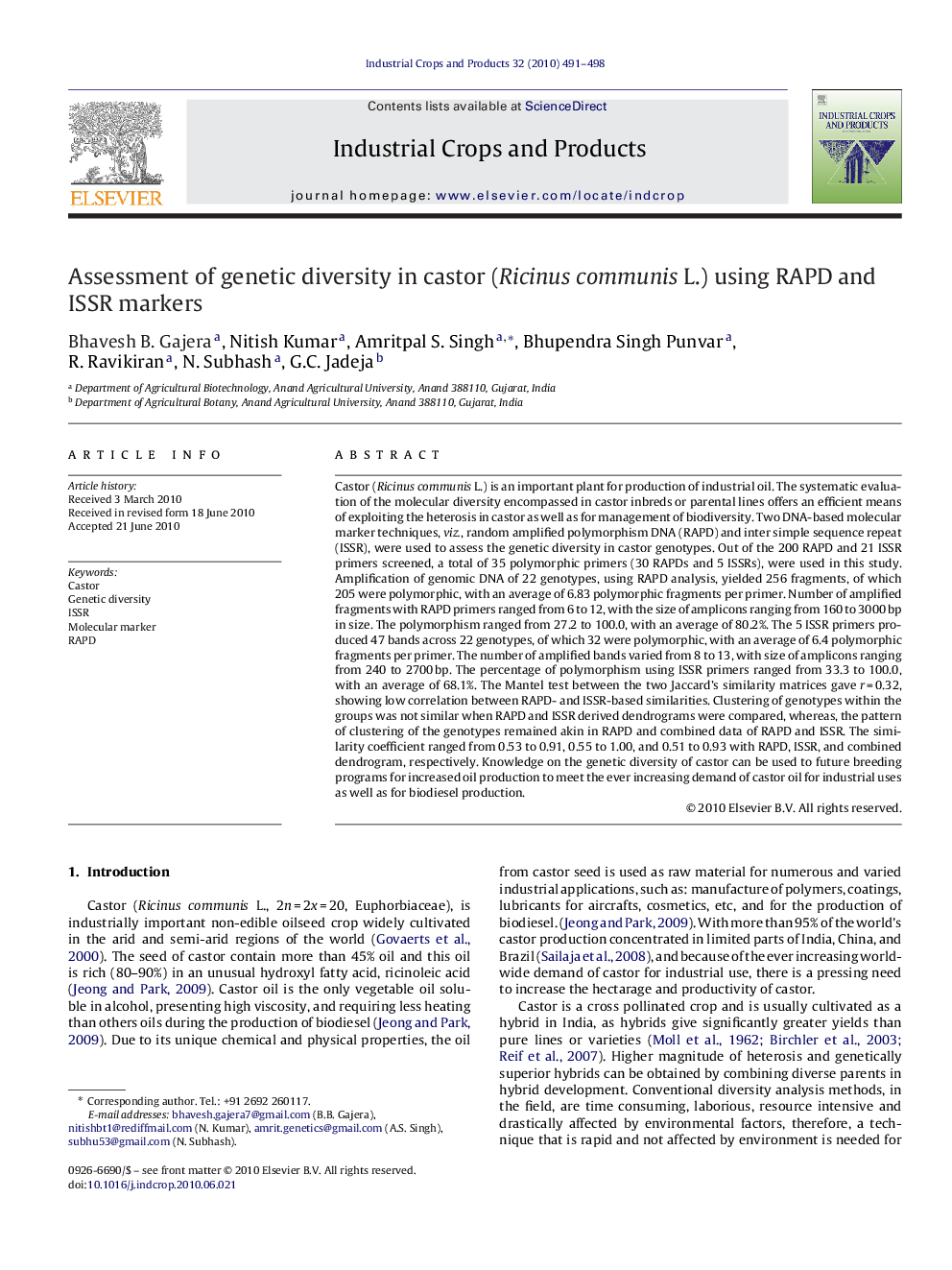| کد مقاله | کد نشریه | سال انتشار | مقاله انگلیسی | نسخه تمام متن |
|---|---|---|---|---|
| 4514739 | 1322218 | 2010 | 8 صفحه PDF | دانلود رایگان |

Castor (Ricinus communis L.) is an important plant for production of industrial oil. The systematic evaluation of the molecular diversity encompassed in castor inbreds or parental lines offers an efficient means of exploiting the heterosis in castor as well as for management of biodiversity. Two DNA-based molecular marker techniques, viz., random amplified polymorphism DNA (RAPD) and inter simple sequence repeat (ISSR), were used to assess the genetic diversity in castor genotypes. Out of the 200 RAPD and 21 ISSR primers screened, a total of 35 polymorphic primers (30 RAPDs and 5 ISSRs), were used in this study. Amplification of genomic DNA of 22 genotypes, using RAPD analysis, yielded 256 fragments, of which 205 were polymorphic, with an average of 6.83 polymorphic fragments per primer. Number of amplified fragments with RAPD primers ranged from 6 to 12, with the size of amplicons ranging from 160 to 3000 bp in size. The polymorphism ranged from 27.2 to 100.0, with an average of 80.2%. The 5 ISSR primers produced 47 bands across 22 genotypes, of which 32 were polymorphic, with an average of 6.4 polymorphic fragments per primer. The number of amplified bands varied from 8 to 13, with size of amplicons ranging from 240 to 2700 bp. The percentage of polymorphism using ISSR primers ranged from 33.3 to 100.0, with an average of 68.1%. The Mantel test between the two Jaccard's similarity matrices gave r = 0.32, showing low correlation between RAPD- and ISSR-based similarities. Clustering of genotypes within the groups was not similar when RAPD and ISSR derived dendrograms were compared, whereas, the pattern of clustering of the genotypes remained akin in RAPD and combined data of RAPD and ISSR. The similarity coefficient ranged from 0.53 to 0.91, 0.55 to 1.00, and 0.51 to 0.93 with RAPD, ISSR, and combined dendrogram, respectively. Knowledge on the genetic diversity of castor can be used to future breeding programs for increased oil production to meet the ever increasing demand of castor oil for industrial uses as well as for biodiesel production.
Research highlights▶ Random amplified polymorphism DNA (RAPD) and inter simple sequence repeat (ISSR) markers can be aptly used to assess the genetic diversity in castor genotypes. ▶ Both ISSR and RAPD markers exhibited ample genetic polymorphism among the various genotypes of castor used in the study. ▶ The level of polymorphism revealed by RAPD and ISSR, indicate presence of abundant genetic diversity among the various castor genotypes used in the study.
Journal: Industrial Crops and Products - Volume 32, Issue 3, November 2010, Pages 491–498